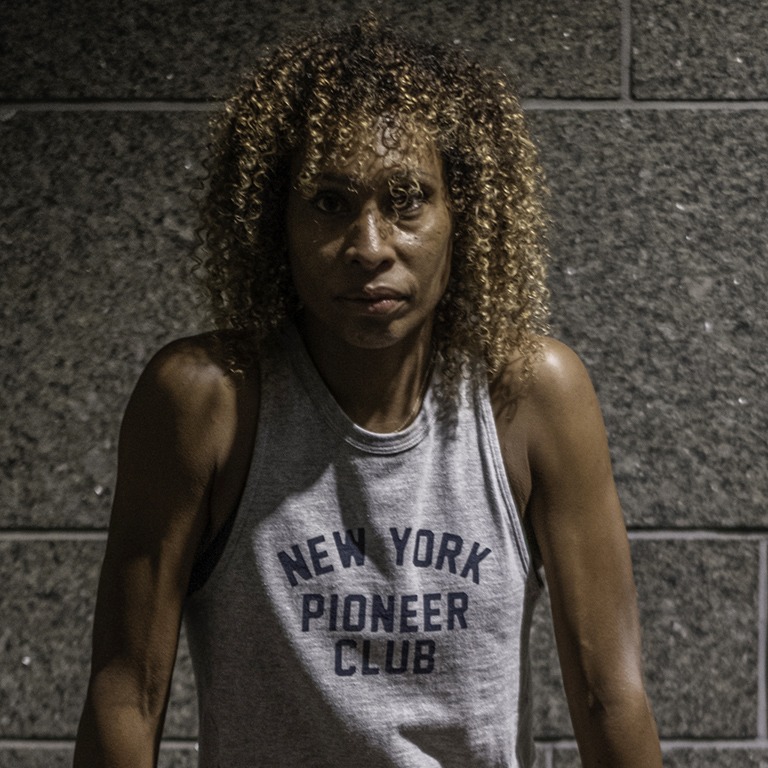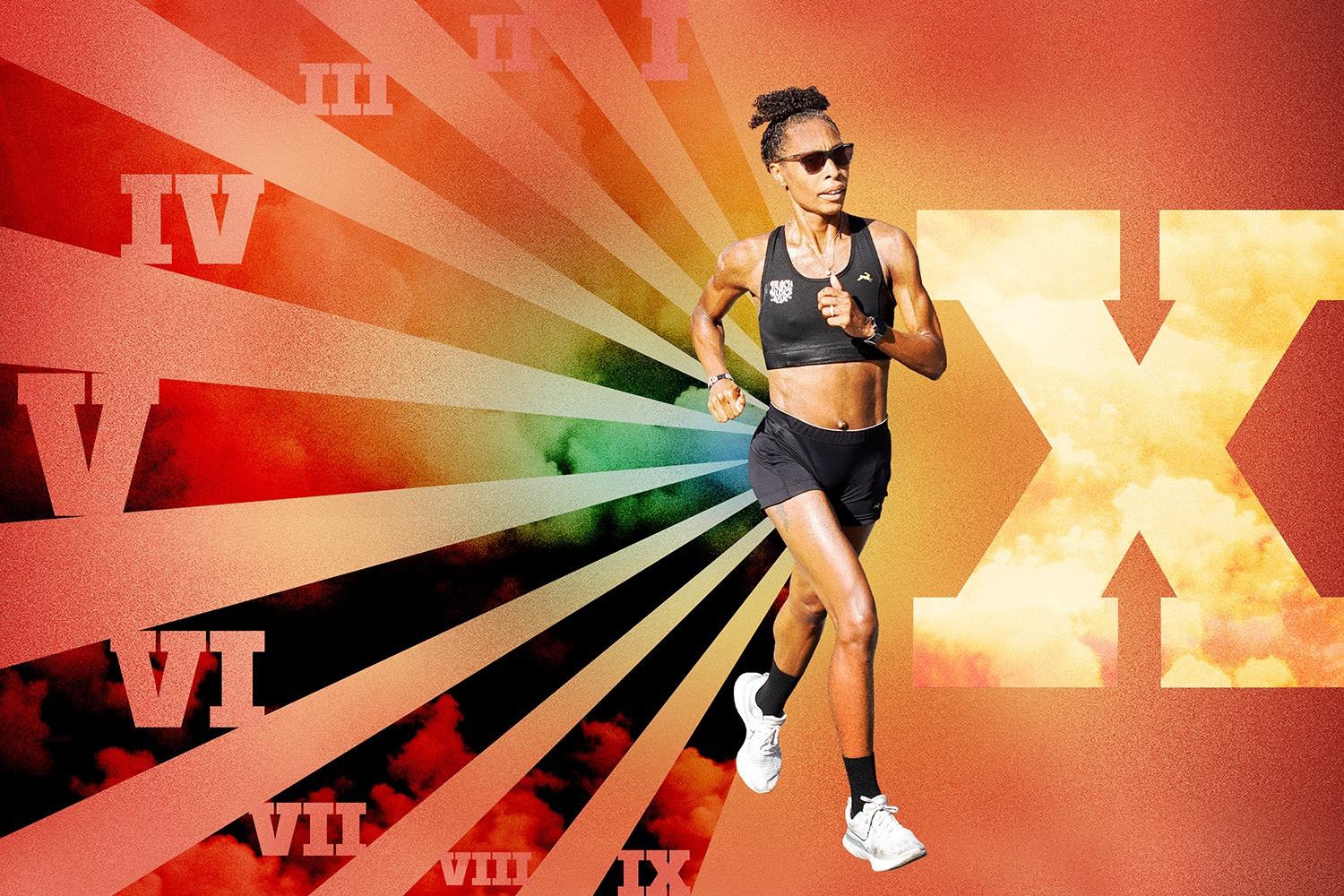Age-grading and age grouping will ultimately nudge even the most ambitious distance runner into a designated place on the results list, but at 51, Erica Stanley-Dottin’s formula for thriving in the marathon is still evolving.
I. The Latecomer
When Erica Stanley-Dottin ran her first sub-3-hour marathon, she had already broken the barrier twice – if only in her mind.
The first time was 3:07:42 at the 2021 London Marathon. The second was 3:01:56 at the 2022 Boston Marathon. Based on her training, she knew she should have gone below three hours in each of those races. And because of her training, she wondered not whether she could go sub-3 — but by how much.
When Erica Stanley-Dottin actually ran her first sub-3-hour marathon, she conquered the 2022 Berlin Marathon in 2:52:05. It was nearly an hour and 15 minutes faster than her first-ever marathon, which she had run in 2008 at the relatively “old” age of 35.
When Erica Stanley-Dottin ran her first sub-3-hour marathon, she was 48 years old.
The art of recreating these moments of firsts felt brand new each time.
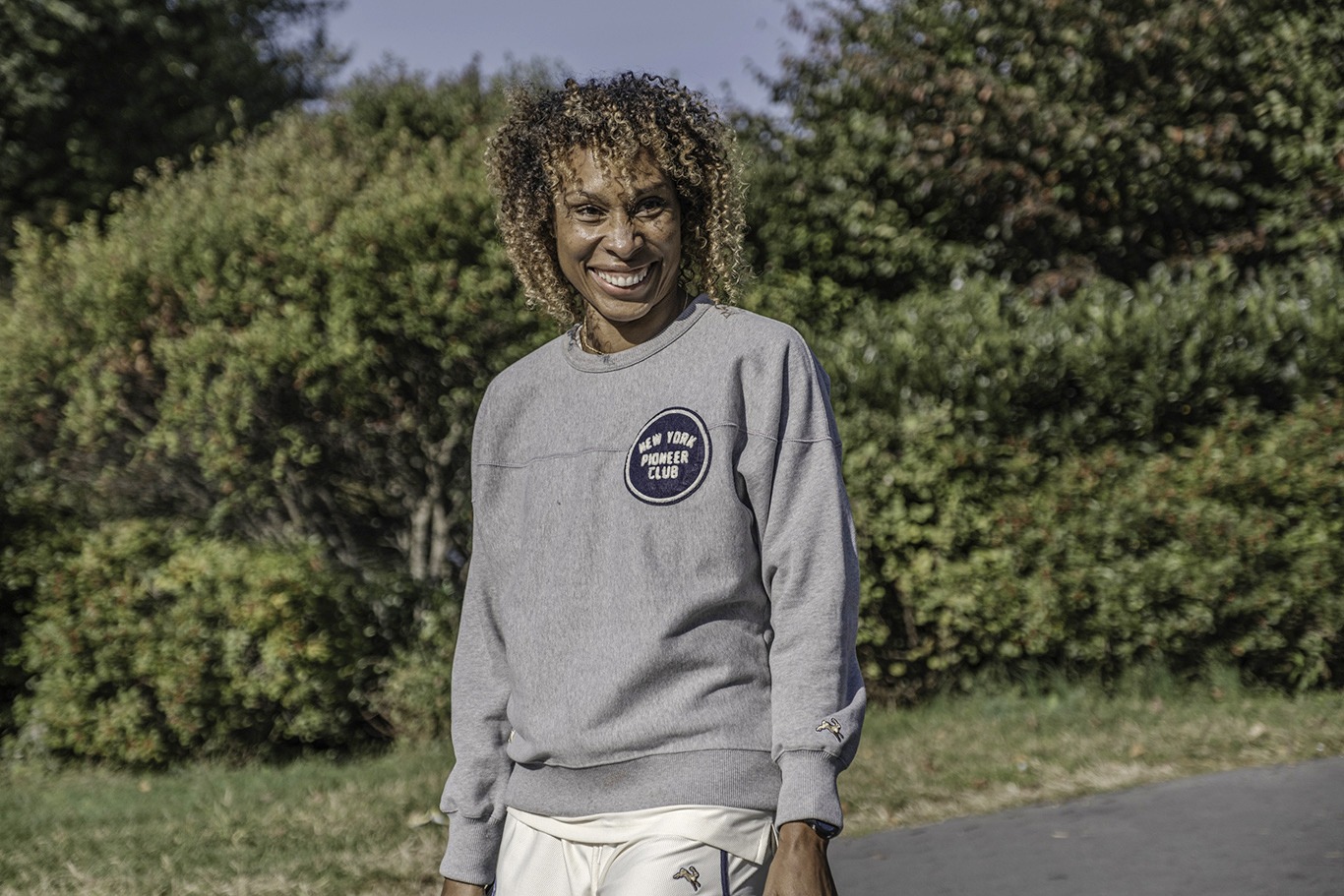
II. Newcomer
In 1985, at 12-years-old, Stanley-Dottin caught the attention of Fred Thompson, an early champion of girls’ and women’s track and field and founder of the Colgate Women’s Games, who coached the all-girls Atoms Track Club on the Pratt Institute track in Brooklyn. She made her way to Pratt, just a few blocks from her family’s apartment, in hopes that the Atoms would be a productive, structured after-school endeavor.
Stanley-Dottin liked to run and wanted to appease her mother, so she joined the team. In the ensuing six years under Thompson’s coaching, she continuously honed her innate speed and racing instincts.
“He was my first real mentor coach,” she said. “I hadn’t trained or been in a formal program up until then.”
As her track prowess grew, Stanley-Dottin’s mother’s health deteriorated in the throes of breast cancer. Being coached by Thompson was an early investment in a windfall that she would not live to witness, as she passed away when Stanley-Dottin was a junior in high school.
“Looking back,” Stanley-Dottin reflected, “she was working to set [me and my sister] up for our futures, because she knew she was sick.”
Even though Stanley-Dottin still had her father, over the years she came to regard Thompson as a pivotal figure.
Stanley-Dottin left Brooklyn behind after high school and reloaded at Georgetown University, where she excelled as a sprinter, locked in and became a 200-meter specialist and notched a personal best 51-second split in the 4×400-meter relay as part of a squad whose school record has stood since 1993.
Post-Georgetown, her nearly ten years of competitive running caught up with her.
“In college, track felt like a job, it wasn’t a passion or a hobby anymore,” she lamented. “I really just wanted to do other things with my life.”
III. Homecomer
For a decade-plus after her college heyday, Stanley-Dottin was back in Brooklyn, occasionally running with neither intent nor competitive zeal.
To wit, she would sometimes drive a mile and a half to Prospect Park, run the 3.4 mile loop, then head home.
“It didn’t even occur to me to run to the park. That’s how far removed I was,” she laughed.
In 2007, a friend trained for the New York City Marathon – a race that Stanley-Dottin had watched pass through her Brooklyn neighborhood for years, but never felt compelled to join. Seeing tens of thousands conquer the distance sparked her then-latent competitive energy, so she under-trained for and ran the 2008 New York City Marathon in 4:06:44.
She wanted to break four hours for no reason other than it was four hours – a nice, round, even number that, for her at the time, had no relation to racing, pacing, or reasonable expectations.
And she might have tried again for sub-4 in 2009 or 2010, had she not met her future husband Howie — or anytime from 2011-2014, had she not given birth her sons Jett and Austin in 2011 and 2013. Or maybe in 2015 or 2016, had she not started a new career as a freelance event producer.
During that eight-year period, Howie ran the New York City Marathon a few times and reignited his wife’s competitive energy.
Nine years after her 4:06 finish, it was time to go sub-4. In 2017, she crossed line in Central Park in 3:56:30.
Just five months later, she knocked off 12 minutes and qualified for the Boston Marathon with a 3:44:41 at the New Jersey Marathon. Shortly after she began hearing about “The List.”

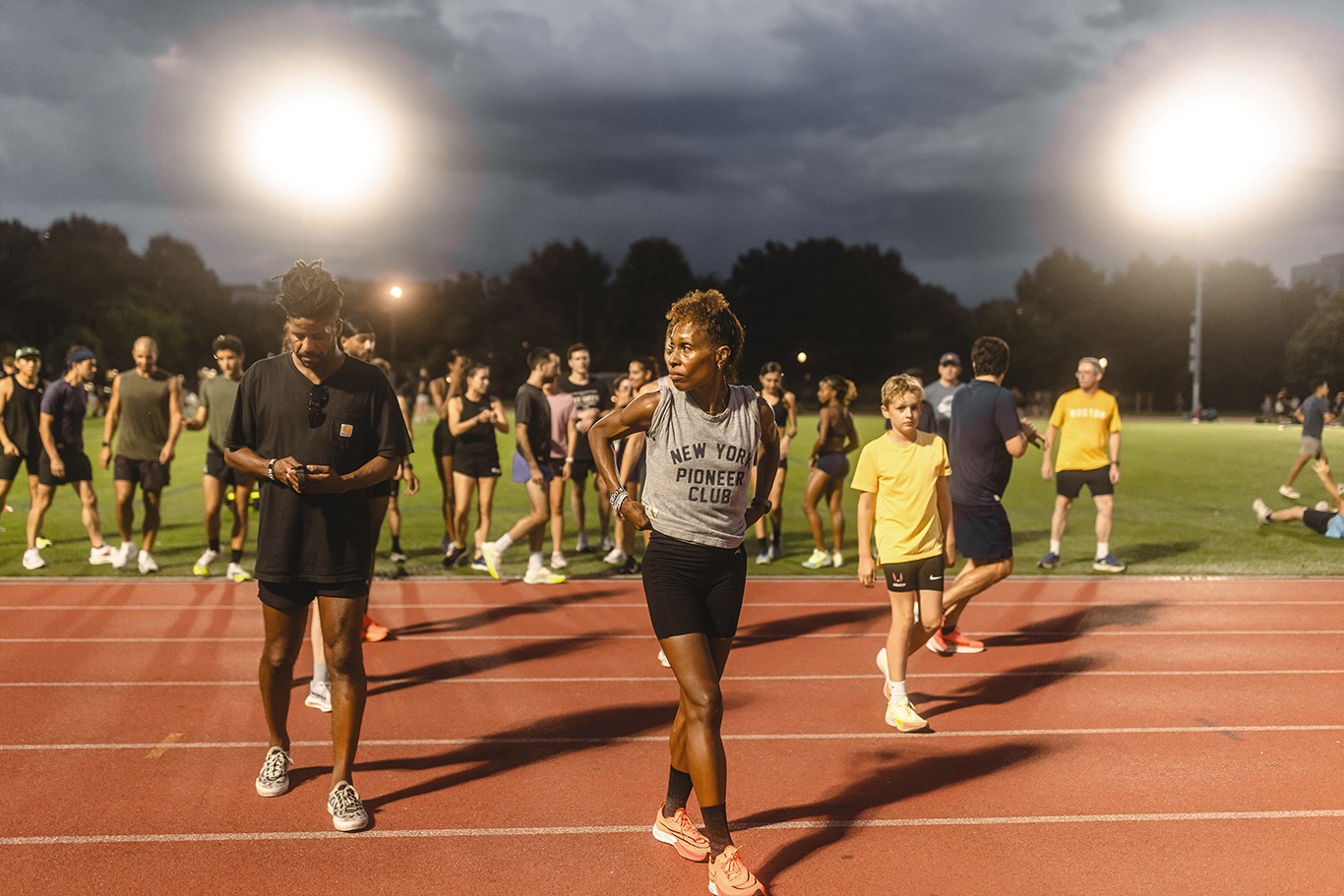
IV. Incomer
Stanley-Dottin only qualified for Boston because a friend suggested that she at least try.
To commit to trying, and, as she recalled, “The opportunity to train for something and have another goal, that was interesting to me.”
For better or worse, the Boston time qualification standards up the ante for many runners, Stanley-Dottin included.
Having spent her formative years with Thompson, she knew that if she wanted to continue improving as a distance runner, she would need a coach.
She came across Knox Robinson and his team, Black Roses NYC, on social media and felt an emotional connection.
At the time, she was unaware that Thompson is firmly carved into Robinson’s own Mount Rushmore of influential running figures. Stanley-Dottin did, however, glean that Black Roses trained hard, had solid goals and were women-centric. In 2018, she attended the team’s open summer sessions, which were effectively a tryout.
“She had it in her mind that this was the group for her,” Robinson said. “She was insistent on staying in touch and coming out.”
Throughout the sessions, as Robinson learned more about Stanley-Dottin’s sprinting credentials and assessed how she tackled his workouts, he started seeing her as an experiment of sorts – one that hearkened back to Thompson.
“If you can take someone who has the perfection of a 400-meter stride and add lots of volume, then you have a championship marathoner on your hands,” Robinson mused. “And then Erica comes around, who was a championship 400-meter runner.”
Black Roses is not for everyone.
The training. The vibe. The expectations. The constant leveling-up.
However, Black Roses is certainly for Stanley-Dottin. It boasts a fellowship that she never expected to fall into as a then-45-year-old mother of two.
Danni McNeilly, the self-proclaimed “old relic on the team” who has donned a Roses kit since 2014 embraced the addition to the roster.
“I’m glad that she joined the team, because the team didn’t have as much of a sisterhood that I was looking for, and she joined the team and made it better for me, personally.”
Even if performance is paramount, community comes first.
Early on, McNeilly helped Stanley-Dottin acclimate to the team’s culture and training, particularly the demanding distance workouts that baffled the former sprinter. Roses sessions introduced not only new aims and expectations, but also the punishing levels of effort and focus required to conquer something like a “fast finish” – a hard 5K or 3×1 mile at the end of an already long run.
“To me, that was just another long run,” McNeilly said, “and she was like, ‘What the hell is this?’”
V. Up-and-comer
In 2017, Stanley-Dottin met her sub-4-hour marathon goal.
A year later, she was part of a collective, a group of like-minded runners and an esoteric coach that has now contributed four names to “The List” – a compilation, developed and maintained by running historian Gary Corbitt, of American-born Black female runners who have broken three hours in the marathon.
From early on, Robinson recognized Stanley-Dottin’s potential to go sub-3 – and beyond.
“She was already well into her 40s,” he recalled, “and so the barrier was low and then the sky was the limit.”
Initially, though, Stanley-Dottin did not consider herself a threat to join The List. All she wanted to do was break 3:30 in New York.
In her Black Roses debut distance race, she finished the 2018 New York City Marathon in 3:30:30.
Then: the 2019 Boston Marathon in 3:45:17.
Then: the 2019 Philadelphia Marathon in 3:15:33.
Then: COVID, civil unrest and a period of perpetual uncertainty.


VI. Forthcomer
Robinson described August of 2020 as “very foundational for us as a coach and an athlete.”
He and Stanley-Dottin spent much of their teens and young adulthood in Brooklyn, not knowing one another but concurrently experiencing a Black nationalist political education – and these learnings were simultaneously formal and informal. It was broadly applicable yet unique to their specific locale, that, 30 years later, resurfaced in the decentralized Black Lives Matter movement.
“These politics weren’t new to [Stanley-Dottin],” Robinson said of awareness surrounding the intensity of climate of the summer 2020.
Soon after George Floyd’s murder, Stanley-Dottin and Robinson began discussing Black August, a monthlong commemoration that started in the 1970s to honor Black freedom fighters who died – specifically in prison or due to harsh policing – in the struggle for Black liberation.
After much conversation and contemplation, Stanley-Dottin felt compelled become immersed her own Black August undertaking and told Robinson that summer she would reexamine the writings of formative Black nationalists such as Elaine Brown and Assata Shakur – while also running every day.
“She was revisiting all those things in the context of running every day as a meditation on the Black nationalist struggle, and her own life, Robinson said.” And at the end of it, she felt strong, in many ways.”
Stanley-Dottin continued adding mileage for the remainder of 2020 and into 2021, and felt stronger than ever.
“I had never done 70-80 miles per week,” she said. “I thought I would be injured. That there was no way I could, at my age, do that. Then I saw that I could, and it was fine, and everything changed after that. My running improved. I got faster in every way – at practice, in shorter races, in everything.”
Robinson recalled, “As a coach, I said, ‘Oh, that’s cool.’ I didn’t want to get in her way. I was excited because that was the volume piece that you can’t force on anybody. She came to it on her own, in a political way, on a personal level.”
Then came Erica Stanley-Dottin’s first two sub-3-hour marathons – if only in her mind.
VII. Overcomer
At the 2021 London Marathon, a mile-19 hamstring cramp put three hours out of reach and resulted in a 3:07:42 finish.
“I was disappointed,” she said. “That was my first true heartbreak.”
Six months later, at the 2022 Boston Marathon, she felt good for first 20-or-so miles, then combusted in a way she had never considered possible: her vision blurred, her left contact fell out, she blacked out – she even walked some.
McNeilly, who was spectating the race, noticed that something wasn’t right.
“I was on Heartbreak [Hill], and I saw it in her face. She looked strong, but I knew that she was not all the way there. I was like, ‘If she makes it – or doesn’t make it – it’s gonna be by the skin of her teeth.’”
She did make it, in 3:01:56.
A nearly six-minute personal record, despite it all.
But, in order to join The List, she would have to overcome these disappointments.
And so, in September 2022, Stanley-Dottin headed to Berlin for another crack at the elusive mark.
Robinson, who, five years prior, notched his own personal best of 2:33:39 at the 2017 Berlin Marathon, told Stanley-Dottin that Berlin is meant to be run fast. He advised her not to worry if her watch indicated that her early pace was unusually quick, because she was there to run unusually quickly
She felt great at mile 20, a sensation she had yet to experience in a marathon, and went on to cross the line in 2:52:05.
“I was there waiting for her to finish,” Robinson said, reflecting on the moment. “Incredible performance that we knew was a long time coming.”
McNeilly was thrilled and proud, but not at all shocked.
“It’s hard to be surprised when you know that people can perform,” she said.
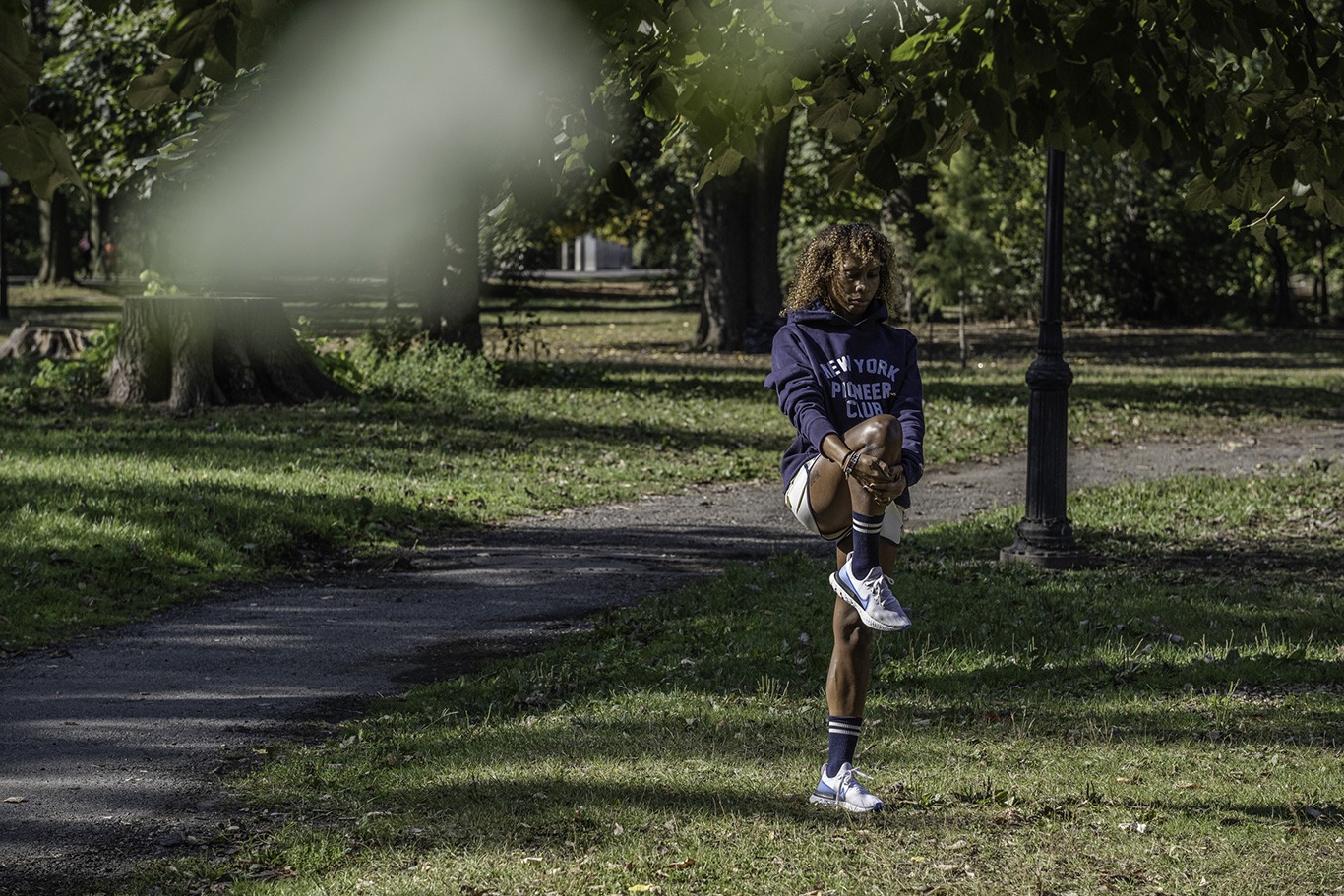
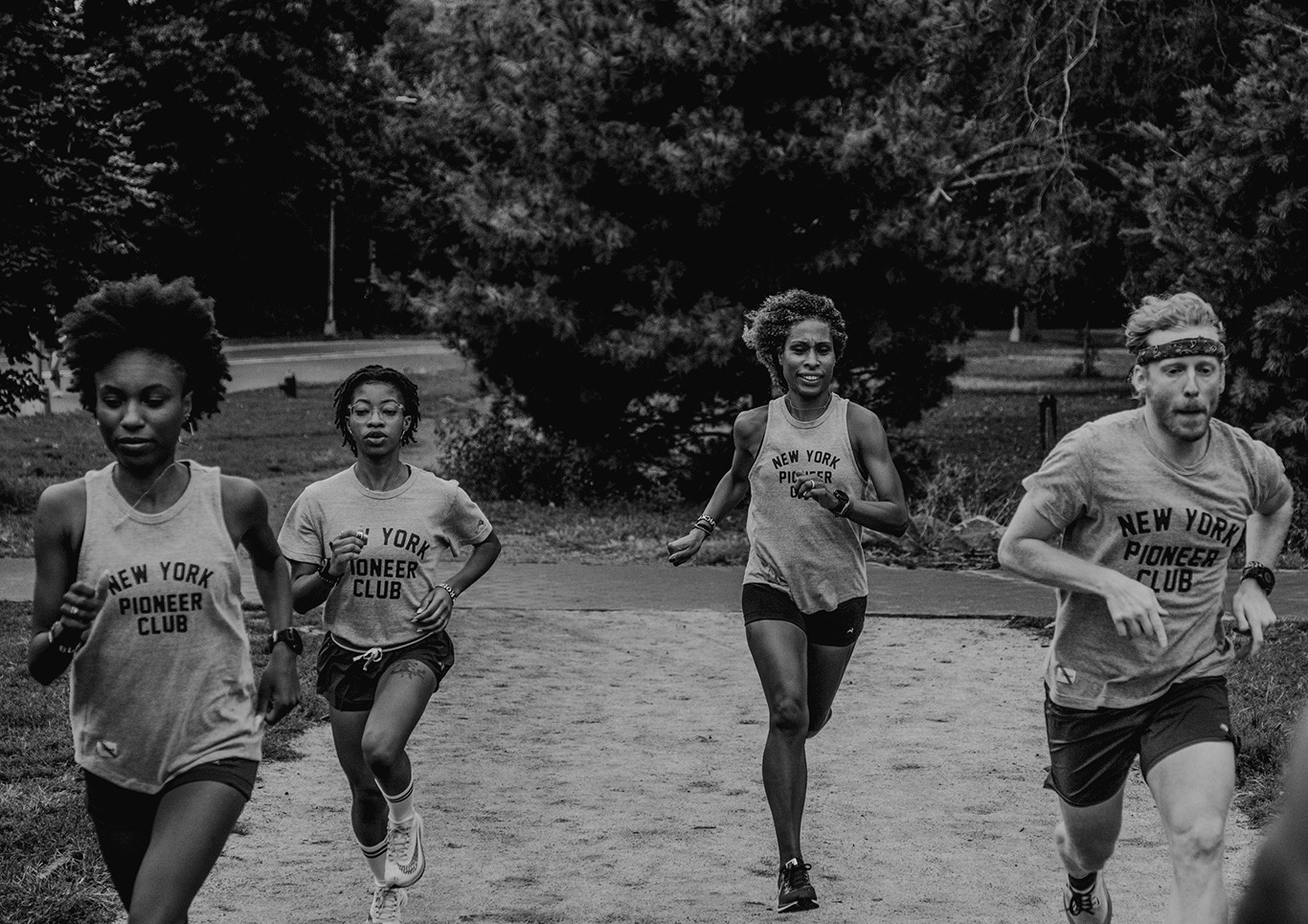
VIII. Becomer
Stanley-Dottin became the 25th woman to join The List, which has since grown to 32 women, including Black Roses peers McNeilly, Sharada Maddox and Giovanna Fischer.
In the time since her own triumph in Berlin and she reflect on this feat for both herself and her teammates.
“Seeing that list grow is a part of me, and is a part of Black Roses,” Stanley-Dottin said. “We don’t put pressure on anyone in that way, but it’s part of our team ethos.”
She’s honored to be part of this legacy and the team collective that has fundamentally continues to alter her as both a person and a runner.
“[It] wasn’t about running with people,” Stanley-Dottin clarified. “It was about running with those people.”
Perhaps most of all, she’s thrilled that American-born Black female marathoners are now included in the conversation about high performance. As proof of concept, in 2023 she clocked two more sub-3-hour marathons: 2:58:41 in Boston and 2:52:58 in Valencia.
Then in April 2024, she won the Newport Half Marathon in 1:23:39.
But Berlin in 2022 remains her proudest running accomplishment, for reasons that transcend the time on the clock.
“I was able to collect myself, come back, train hard, and go for it again,” she emphasized.
And she was also quick to acknowledge Valencia.
“I shocked myself with that race. I didn’t have any idea what I was going to run,” she said. “When I came back and I ran the same time [as Berlin], it taught me a lot about what I needed to do, what I thought my trajectory was.”
IX. Welcomer to All-comers
In April 2022, Stanley-Dottin became the New York City community and marketing manager at Tracksmith, a Boston-based boutique running brand. Matt Taylor, Tracksmith’s co-founder and CEO, found that Stanley-Dottin’s local roots, experience and temperament made her perfect for this role. That role, from the outset, involved the planning for — and opening [of ] — the brand’s Brooklyn storefront in 2023.
“Our philosophy is to be active on the ground,” Taylor remarked. “It was a lot easier to open a retail store with some awareness already created.”
Stanley-Dottin was all-in from the outset.
“I feel good about being able to represent my hometown and do that work on the ground,” she said.
At the brand’s weekly group runs in Brooklyn, she described establishing welcoming community — but also emphasis on training.
“When we say we’re going to get you ready for the marathon, I’m putting everything I’ve learned – from Knox, from the community – into what I’m doing at Tracksmith, and I think that shows,” she explained.
Even if performance is paramount, group affinity comes first.
“I am not a white man,” she continued. “What I represent as the face of Tracksmith in New York has brought about a lot of different things over the course of my job. People in the beginning would come up to me and say, ‘I would never come to these before because I thought they would be too fast, a bunch of bros running too fast.’”
“We receive a lot of unsolicited feedback from people,” Taylor noted. “They’ll say, ‘Oh my god, I couldn’t have done this without Erica.’”

X. Oncomer
Outside of community, Stanley-Dottin’s personal performance remains paramount.
“I still have aspirations of running faster than 2:52,” she declared.
“I envy the drive that Erica has,” marveled McNeilly. “I don’t have that drive. I have the ability; I don’t have that drive. That’s the one thing I wish I had like Erica. I want that drive, but I don’t have it. I respect it so much.”
Taylor gushed, “She’s such a wonderful person, and also just incredible to still be running at this level for someone who wasn’t a distance runner in college and came to it late – it’s remarkable. I don’t think she’s slowing down.”
And why would she? Interminable internal drive is Stanley-Dottin’s default.
“I don’t feel external pressure in this game right now,” she observed. “I’m older, I have a lot of things going on, this is my hobby. I do this for fun. I want to perform, and I want to do well, but it doesn’t come from the outside.”
Many age-group runners might say the very same, justifying marathons as ongoing distractions from their race through life. Stanley-Dottin’s marathons, however, are oncoming manifestations of persistently pursuing personal records at paces that perhaps no other 50-plus-year-old former sprinter has ever even dreamed of maintaining for 26.2 miles.
“We don’t ever get a chance to really reflect on how incredible it is that she would be that consistent at that level – and to say nothing of what she’ll do next,” Robinson added. “She’s thinking about women who have broken 2:50, and when is she going to do it?”
